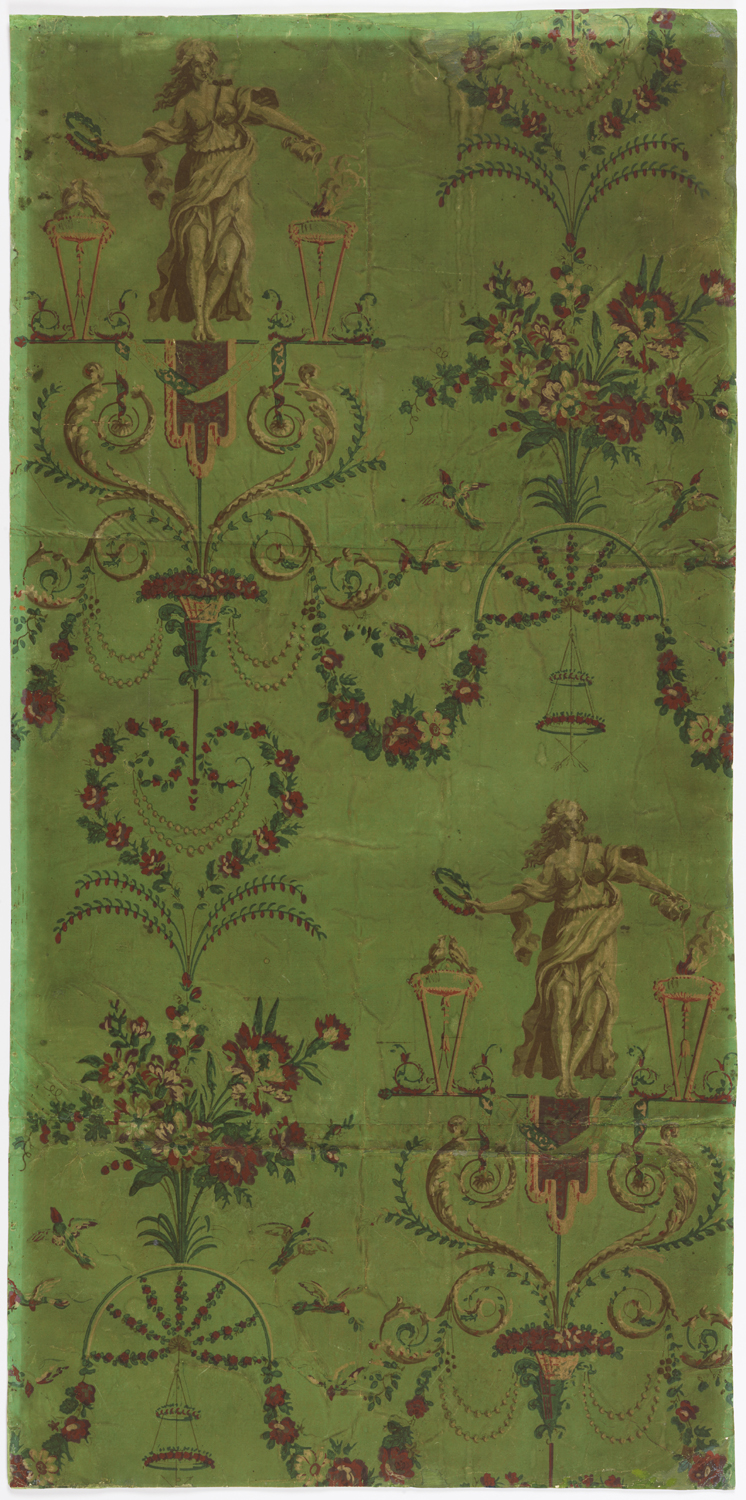When the founders of the museum at Cooper Union began the wallpaper department they were interested in three main collecting areas: gilded embossed leathers, antique French papers, and American bandboxes. This arabesque design was the first wallpaper acquired for the new collection and was produced by the Jean-Baptiste Réveillon factory, one of the premier wallpaper manufacturers in Paris known for their sophisticated designs and high quality standards. Arabesque designs were inspired by the excavations at the recently discovered ruins of Pompeii and Herculaneum, and were composed of a variety of classical motifs including draped female figures, tripod urns, floral and pearl festoons, and scrolling foliage arranged symmetrically in vertical bands. Réveillon’s arabesques consisted of three types: large panels of a single arabesque design, narrow arabesques used to frame the larger panels, and repeating arabesque patterns printed in either a single or double-column format, as seen here.
Arabesque designs were quite popular in the United States and there are many surviving examples in American homes. One prime example is the Phelps-Hatheway House in Suffield, CT. The house was built in 1761, then later purchased by Oliver Phelps in 1788. Celebrating the money he had earned on land investments he added a new wing in 1794, which contains many fine examples of antique French wallpapers.
This paper was donated by Mrs. Charles S. Fairchild who was the owner of the Lorenzo State Historic Site. According to Mrs. Fairchild’s notes, while the paper was found in Lorenzo it never hung in the mansion. It was installed in the new parlor of Samuel S. Forman’s house in Cazenovia in preparation for the wedding of Forman’s niece, Helen Ledyard to his employer, John Lincklaen, who built Lorenzo. Forman razed the house in 1813 to build a more elegant one. The surviving samples were from a multi-panelled screen from the drawing room which probably explains the tack marks in the sample.
This wallpaper will be on view in the Hewitt Sisters Collect exhibition beginning December 12, 2014.
Gregory Herringshaw is the head of the Wallcoverings Department at Cooper Hewitt, Smithsonian Design Museum.
